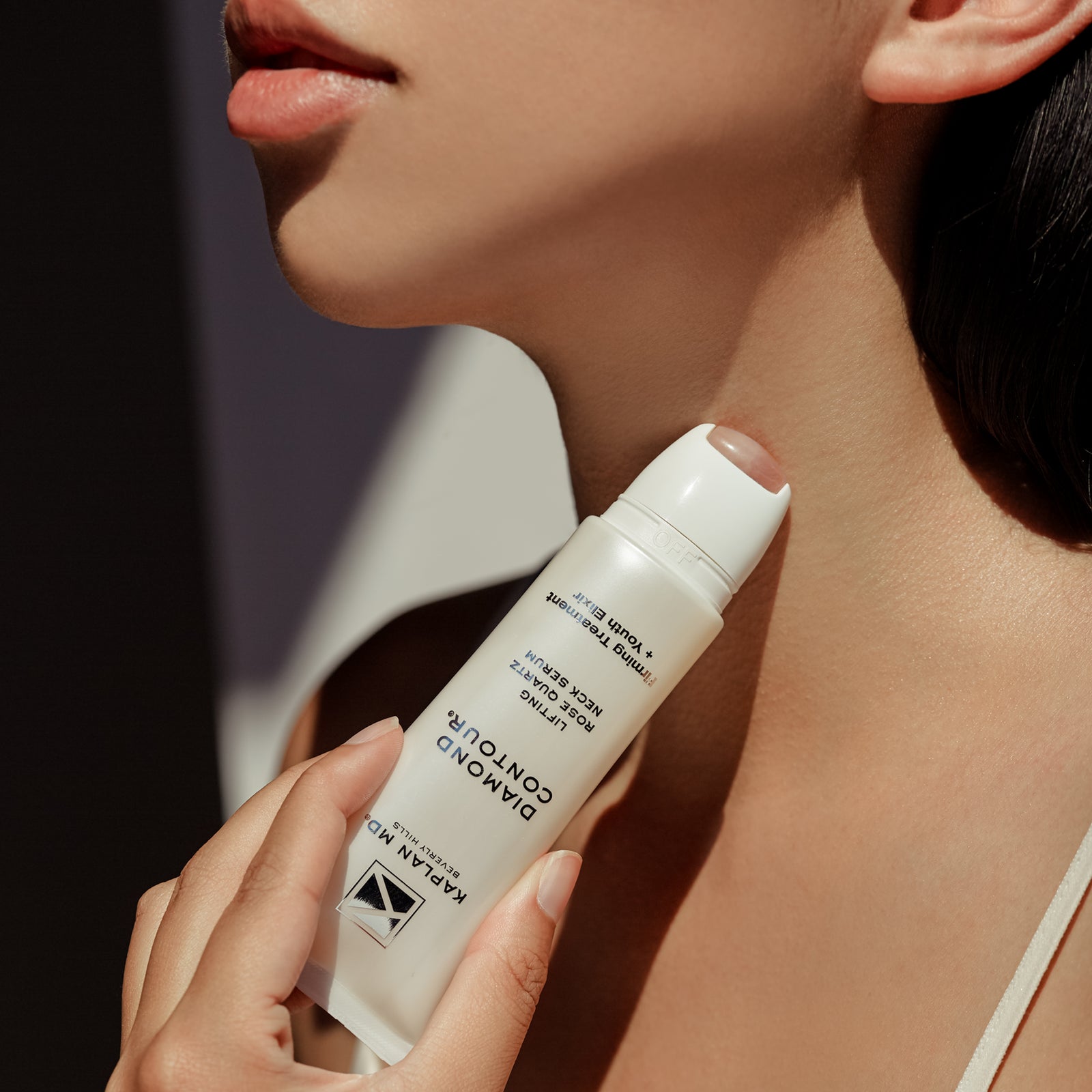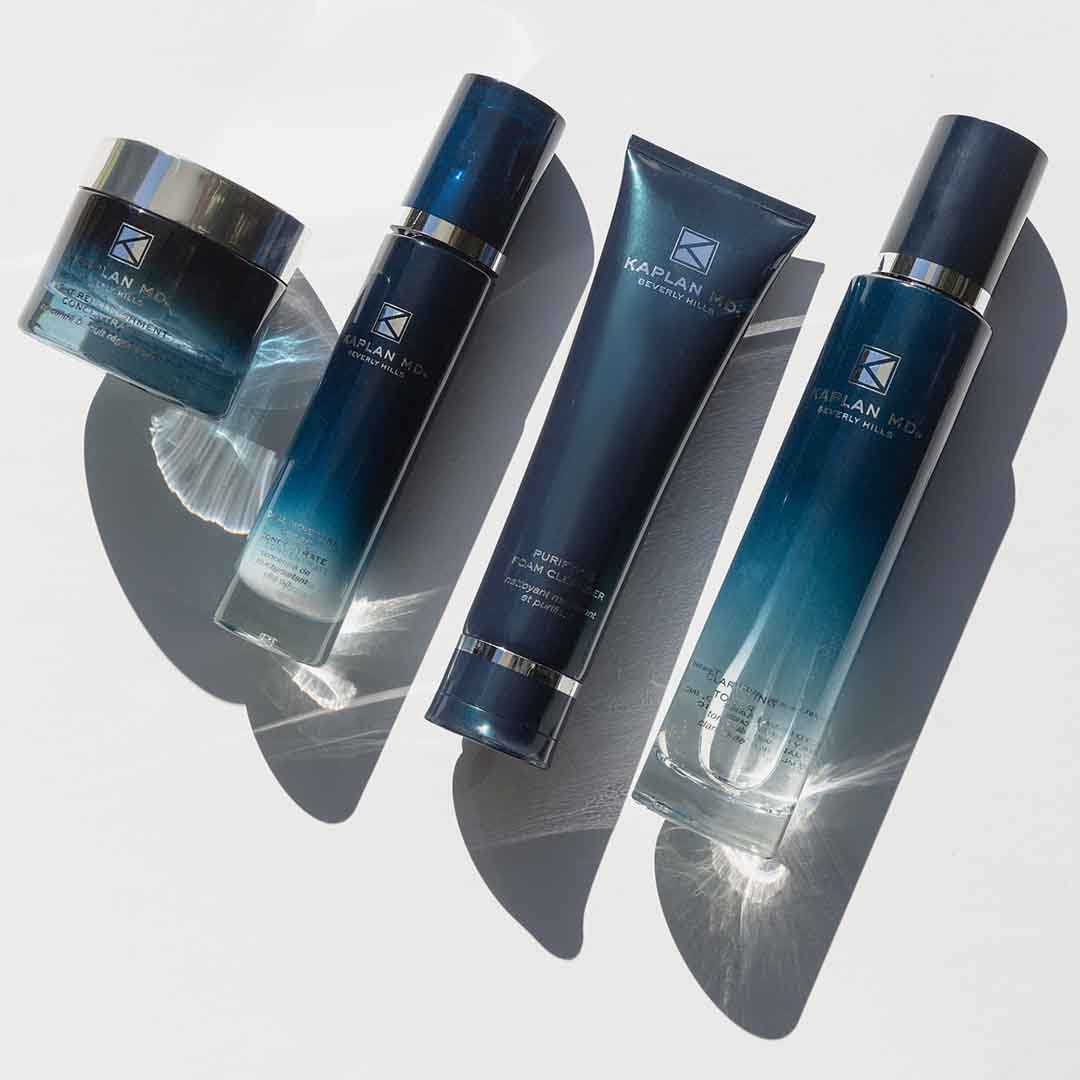Dr. Kaplan – Varicose Veins & Spider Veins
VARICOSE VEINS & SPIDER VEINS
For patients bothered by the appearance of spider veins and varicose veins, dermatologists offer several treatment options. The most widely used are sclerotherapy and laser treatment. Before selecting the treatment option best for each patient, a dermatologist considers many factors including the vein types, location of the vein, and the patient’s medical history.
It is important for your dermatologist to know if you have a history of blood clots in the lungs or legs or a clotting disorder. This does not necessarily mean that treatment must be avoided, but it may affect treatment options. For best results, more than one treatment option may be used.
WHAT ARE SPIDER VEINS?
Spider veins are blood vessels that lie near the surface of the skin and range in color from red to blue to purple. Commonly occurring on the legs, spider veins also develop on the face and other areas of the body. Some spider veins look like short, unconnected lines about the size of a hair. Others form a sunburst pattern that may resemble a spider web or branches of a tree.Spider veins can occur in a small area and may be barely noticeable, or they can cover a large area of the skin. Occasionally, spider veins can cause some discomfort.
WHAT ARE VARICOSE VEINS?
These are veins that have become enlarged or swollen. Varicose veins commonly develop in the legs and feet, but can occur on any parts of the body. Often varicose veins rise above the surface of the skin and have a tell-tall knotted appearances. Some varicose veins are flesh-colored. Others are blue, green, or dark purple. Sometimes varicose veins appear together with spider veins.
WHAT ARE THE CAUSES?
To understand why varicose veins and spider veins develop, it helps to know what veins do. Arteries carry oxygen-rich blood from the heart to the entire body. Veins return from oxygen-poor blood to the heart. Veins have valves that prevent the blood from flowing backward. When a valve weakens, blood may leak backward. If enough blood flows backwards, it can cause the vein to swell. When this happens, the vein becomes a varicose vein. Some people inherit a predisposition for weak valves, which gives them an increased risk for developing varicose veins.Spider veins also can result from this backflow of blood. Other factors that may cause spider veins are the hormonal changes that occur during puberty, pregnancy, and menopause. Birth control pills and hormone replacement therapy may also play a role. This seems to explain why spider veins occur more frequently in women than in men. An injury or tight garments held fast by elastic also see to cause spider veins. In fair-skinned people, sun exposure may lead to spider veins on the cheeks and nose.
HOW CAN IT BE PREVENTED
While spider and varicose veins cannot always be prevented, some lifestyle choices seem to reduce the likelihood of developing scars. Exercise regularly, maintaining a normal body weight and eating a high-fiber diet can help. Protecting the face from sun exposure can help prevent spider veins on the face. Elevating the legs when resting and not crossing the legs when sitting also may help. What a person wears can make a difference, too. Elastic support hose, loose-fitting clothing and low-heeled shoes can reduce the appearance of the leg veins.
WHAT IS SCLEROTHERAPY TREATMENT?
Sclerotherapy is the most popular treatment option for veins on the legs. It is used to teat spider and varicose veins on the legs and spiders veins on the face.Sclerotherapy involves injecting small doses of a solution directly into the unwanted vein with a very fine needle. The solution irritates the vein, causing it to swell, stick together and the blood to clot. This essentially seals off the treated vein from other veins. Over a period of weeks, the treated vein turns into scar tissue that is absorbed by the body. Eventually, the scar tissue becomes barely noticeable or invisible. This procedure can be performed in a dermatologist’s office and does not require anesthesia.
A treatment session generally lasts 15 to 20 minutes. A number of veins can be treated during one treatment session and a single vein may be injected several times. Some veins require more than one treatment session. Sessions may be spaced weeks or months apart, depending on the vein.
To treat larger varicose veins, a dermatologist may use ultrasound-guided sclerotherapy. The ultrasound gives the doctor a live view of the veins, which allows the solution to be injected exactly where it will be most effective.
After treatment, most patients can expect to see an 80 to 90 percent improvement. This may require several treatments. Fading is gradual and occurs over a period of time.
While sclerotherapy can be safely used on all skin types, there are potential side effects. Most side effects are mild and temporary. Potential side effects include:
- Stinging or pain at the injection site and muscle cramps.
Sometime an injection is painful. Occasionally, swelling of the ankles or feet and muscle cramps occur. - Red, raised areas at the injection sites.
Hive-like reactions and itching can occur and usually fade within 10 to 15 minutes of the injection. Sometimes, it can take a day or so for the red, raised ares to disappear. - Brown lines or spots on the skin at the treated sites.
Darkened areas may appear and tend to be more common in patients who undergo treatment for a large or delicate vein and patients who tan easily. In most cases, the discoloration disappears within a year, but it can last longer. - Clusters of fine, red blood vessels develop near the injection sites (matting).
When larger veins are treated, about one-third of patients develop these clusters. Especially common on the thigh, many clusters disappear with time. Some respond to additional sclerotherapy or therapy. A few may last. - Small, painful ulcers at treatment sites.
Appearing immediately or thin a few days of treatment, these develop when some of the solution escapes into the surrounding skin or enters a small artery. This can be successfully treated, but it is necessary to inform the dermatologist immediately, especially if increasing pain or scabbing is noticed. - Temporary bruises.
Patients who tend to bruise easily may have temporary bruising. This usually disappears in a few weeks. - Allergic reactions.
Some patients have an allergic reaction to the injected solution. Wheezing, difficulty swallowing, and severe swelling are usually signs of a severe allergic reaction. Most commonly this happens during treatment or shortly afterwards. Inform the dermatologist immediately if these symptoms occur so that appropriate medical treatment can be given. - Inflammation of treated blood vessels (phlebitis).
More common in patients who have a family history of clothing disorders, phlebitis can be effectively treated with aspirin, compression, antibiotics, or heat. - Lumps (thrombi) in injected vessels.
Most common following treatment of larger varicose veins or very large spider veins, this can be successfully treated by draining the coagulated blood from the areas.
WHAT IS SCLEROTHERAPY TREATMENT?
Lasers are used to treat spider and varicose veins on the legs, and spider veins on the face.Lasers send wavelengths of light directly into the vein. This causes the vein to heat up internally and turn into scar tissues. The scar tissue gradually fades or disappears. Technological advances make laser treatment safer and more effective than ever. Like sclerotherapy, laser treatment can be performed in a dermatologist’s office and does not require anesthesia.
Many types of lasers are used to treat veins. Your dermatologist will recommend the best type of laser, based on the size and location of the veins to be treated. For best results, laser therapy may be combined with sclerotherapy.
Different lasers are used for different skin types. To prevent permanent skin discoloration, people of color may require lasers that emit specific wavelengths of light.
Potential side effects from laser therapy include:
- Redness or swelling. Occurring after treatment, this usually disappears in one or two days.
- The treated vein remains despite treatment.
- Discoloration of the skin. Treated skin may become lighter or darker than the surrounding skin. Often this disappears within a month or two, but it can be permanent.
- Skin wounds. These heal, but may cause scarring.
- Temporary bruising may occur.
Side effects vary with the type of laser selected
ARE THERE OTHER TREATMENT METHODS?
For spider veins on the face, other treatment options include
electrodessication and intense pulsed light. Large varicose veins on the legs may require vein ligation and stripping, an outpatient surgical procedure used to remove a damaged vein. Ambulatory phlebectomy is another option for varicose veins. This procedure involves making small punctures in the skin in order to remove the damaged vein. Radiofrequency can be used to destroy large veins in legs.
WHAT CAN I EXPECT AFTER TREATMENT?
After treatment, the area tends to look worse. This is normal. Improvement occurs gradually. Post-care instructions will depend on the treatment give and a number of other considerations.Following treatment for a leg vein, exercise is often limited for a few days or longer. Patients receiving sclerotherapy are usually instructed to walk for a certain amount of time each day and to avoid intense physical exercises. It may be necessary to avoid prolonged sitting and standing.
CAN VEINS RETURN?
While generally spider veins completely disappear, new spider veins can appear in the same general area. It is possible for large veins to recur. Sometimes spider veins also recur.
All content solely developed by the American Academy of Dermatology.








